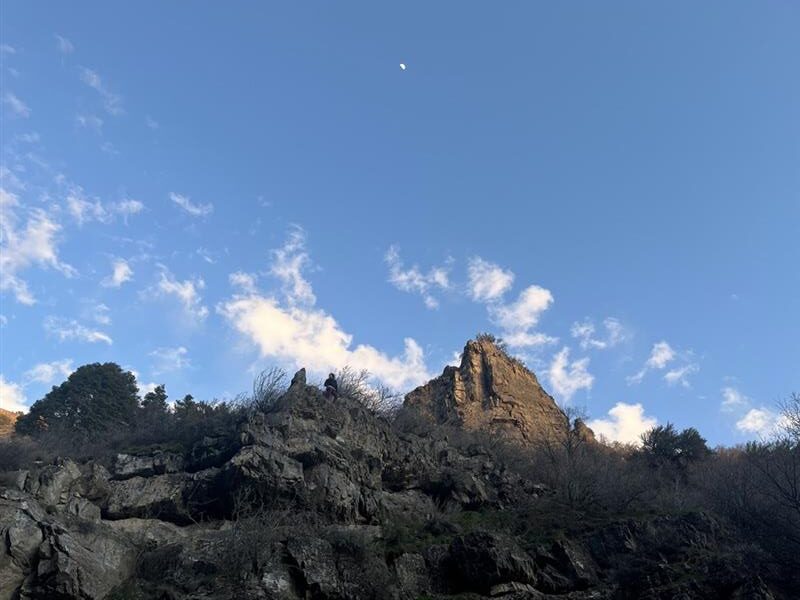The summer time is one of the most popular times for Utah citizens to go hiking. There are so many different hikes throughout the whole state. Between the easy and difficult hikes, there is a hike for everyone.
When you are hiking, you should prepare for the hike, plan for worst case scenario, and stay aware of the environment around you. It is important to be safe as you are hiking and know how to take care of yourself. According to Outsideonline.com, “EMS responded to 45.9 injuries per million park visits,”and the National Park Services, state that “out of 420+ national parks, 177 reported one or more deaths in” the year from 2014 to 2019. So here are our tips on how to prepare for a hike.
Prepare For Your Hike
Pick Your Trail
Before you go hiking, find the trail that you want to hike on. There are many apps, like AllTrails, Avenza Maps, OS Maps, and Hiking Project. These apps will show you the trail, where to park, the length, elevation gained, etc. This is important, because a trail can seem short and easy, but a large elevation gain can make a hike really hard. If you have all the information before you go on the hike, you can be more prepared.
“When calculating your hike’s difficulty and completion time, add one hour to the hike’s overall time for every 305 m (1000 ft) of increased elevation. Also if the trail’s elevation increases by 400m (1312 ft) within one kilometre (0.62 miles), it’s considered steep”. You can also figure out how difficult the trail is as well. Even if it seems like the elevation won’t be a problem, the hike might be rocky, full of places you could easily sprain an ankle with the wrong shoes.
There often are also comments from others who have hiked the trails. They will provide tips for the paths, like whether they are good for children, if dogs are allowed, and other obstacles. It’s also important to know where the trail will let off, as some hikes have different end points.
It’s also good to have more information on your hike, depending on the time of year that you are going. While it could be fairly warm and dry where you are at in the valley, once you get up into the mountains, there might be slick mud, frozen ice, and cold wind. This way you can make sure that you have the proper clothing and shoes.
Get In Shape For Your Hike
Once you have picked out a hike, you need to make sure that you are in shape for it. If you are going on a longer hike, go on some walks beforehand to make sure that your body is prepared. Or start with smaller hikes and build up until you are on the same level of your planned trip. If you are going to go backpacking, make sure that you break in your hiking boots, practice with a backpack, and lift weights. This way, on the day of the hike, you will be prepared.
Pack Your Hiking Essentials
If you are going backpacking, make sure that you have the right pack for you. The pack should be light, since you are probably going to be filling it with supplies. You also should make sure that you bring water with you. Even if you feel like it is a small hike, the hot air might have a big impact. If it is a longer hike, bring a good lunch, always bring rain gear, and some other layers. Also, bring water shoes with you if you know that there will be a river to cross.
If it is snowy or icy, then you can make sure that you have crampons, walking sticks. You can look at Adventures.com for more information of how to dress and pack clothing for longer hikes.
How To Stay Safe While Hiking
When you are hiking, there are several ways that you can stay safe.
Know Your Limits
While hiking, be aware of your body and your limits. If you are very active, a hike might be easy, but if you haven’t gotten out as much, you might find the hike harder than other people. Also, with changes in elevation, you might find the hike harder than a normal walk, espeically if you don’t go hiking often.
Hike With Someone Or Tell Others of Your Plans
It is important for someone to know of your plans for your hike or to have someone with you. If you get hurt on the hike, and you are not able to make your way back down, you need to have a plan to get help. Either someone to hike down and get help for you. If you are alone, then tell a few people about your plans, especially when you expect to be back home. This way, if you are not able to get help, then your loved ones can make sure to come and find or help you.
Also, bring your phone with you, but don’t rely on the GPS or service. They might not be reliable, but loved ones might be able to find some of your last location if they needed to find you. You should also always bring a map and compass with you to find your way back in a worst case scenario.
If you are hiking in a group, let the slowest hiker set the place, so you all stay together. This may mean that you are taking longer to get to your end goal, but no one will get left behind.
Be Aware of Your Surroundings
Also, be aware as you are hiking of the distance you have gone and the time you have left, so you do not get stuck outside in the dark. You want to be able to see dangers on the ground on your path because once it gets dark, you won’t be able to.
If you are not prepared to hike in water, avoid it. Wet rocks will be slick to walk on, and rivers can be dangerous if you fall into.
Some animals that you should be aware of while hiking in Utah are black bears, cougars, rattlesnakes, as well as elk, deer, moose, and coyotes. Also bugs, like bees, wasps, mosquitoes, and black widow spiders might be in your path. Watch for signs of these creatures as your walking.
While you are hiking, spray yourself with repellents and sunscreen. Then during and after the hike, make sure that you check for ticks.
You also should know when you should end the hike. If the hike is getting harder than you are able to handle, then you should know when to stop. Or if the trail is not as smooth as it was supposed to be, it is okay to come back. As you are hiking, you should be watching the weather, and when you are seeing the weather start to change, you should make sure that you begin to head back home. It is better to be safe, than stuck outdoors in a bad storm.
Stay on the Trail
Don’t go off of the trail. It is easy to get off, and lose your way. This is also a good way to stay away from the wild life, and it protects the environment. The trails are there because they are planning spaces for people and hikers.
What To Do If You Are Injured While Hiking?
Tetongear.com has some tips of what you should do if you are hurt while hiking. While hiking, and espeically backpacking, you should have made sure that you are carrying a small first aid kit.
Sprained or Rolled Ankle
Sprained ankles and rolled ankles are very common injuries to get while hiking. It is easy to step off a rock, step into a hole, or trip on a root and roll an ankle. And these injuries can mean that you are not able to walk as well. If you have been injured, you should follow the RICE Method: Rest, Ice, Compression, and Elevation. “Sit down and give your ankle a minute to rest while your assess the severity of the injury” and if you are near a cold lake or snow, use that as a substitute for an ice pack.
Dehydration & Heat Exhaustion
While you are hiking, espeically in hot weather, you should make sure that you have enough water. “If you start to feel dizzy, weak, or experience any other symptoms of heat illness-stop all exertion and find a place to cool off in the shade or nearby stream. Remove any excess or restrictive clothing and start drinking water and electrolytes immediately”.
Cut, Scrapes, and Abrasions
It is easy to get scratched or cut while hiking. If you do get cut and are bleeding “apply direct pressure using a clean material or extra item of clothing”. Then you should clean out the wound with water, and alcohol if you have it. Make sure you bandage up the cut, and if it is bleeding profously, then you will have to made a tourniquet.
It’s important to have fun and enjoy the outside, but remember to be safe and aware of your surroundings.
Flickinger Boulton Robson Weeks
If you have been injured, speaking with an experienced Utah car accident lawyer at Flickinger Boulton Robson Weeks can help you understand your options and fight for the compensation you deserve. Contact us today at (801) 500-4000 to schedule your free consultation.


